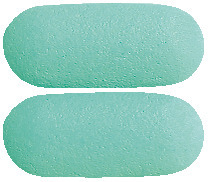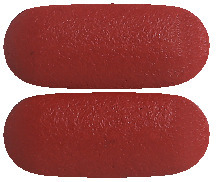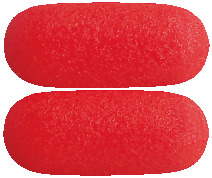What is in this leaflet
This leaflet answers some common questions about Phentermine Juno ER. It does not contain all the available information. It does not take the place of talking to your doctor or pharmacist. If you need any more information about Phentermine Juno please ask your doctor or pharmacist.
All medicines have risks and benefits. Your doctor has weighed the risk of you taking Phentermine Juno against the benefits it can have for you.
If you have any concerns about taking this medicine, ask your doctor or pharmacist.
Keep this leaflet with the medicine. You may want to read it again.
Your medicine
The name of your medicine is Phentermine Juno. Phentermine Juno tablets contain the active ingredient, phentermine. The release mechanism of the drug in this tablet is controlled by hydrophobic and hydrophilic release modifiers. The tablet consists of a hydrophobic wax matrix which contains a hydrophilic release modifier and the drug substance.
What Phentermine Juno is used for
Phentermine Juno is used to reduce body weight in obese or overweight patients. Your doctor will assess whether Phentermine Juno is suitable for you. Phentermine Juno works by directly affecting the area of the brain that controls your appetite making you feel less hungry.
Ask your doctor if you have any questions about why this medicine has been prescribed for you.
Phentermine Juno should be used as a part of an overall weight management plan which should include a medically controlled diet and exercise program.
Phentermine Juno is available only with a doctor's prescription.
Your doctor may prescribe Phentermine Juno for another purpose. If you are not sure why you are taking this medicine ask your doctor.
Before you take Phentermine Juno
When you must not take it
Do not take Phentermine Juno if you have an allergy to:
- any medicine containing phentermine
- any of the ingredients listed at the end of this leaflet
- any other similar medicines used to reduce weight
Some of the symptoms of an allergic reaction may include:
- shortness of breath
- wheezing or difficulty breathing
- swelling of the face, lips, tongue, or other parts of the body
- rash, itching or hives on the skin
Do not give this medicine to a child under the age of 12 years. Safety and effectiveness in children younger than 12 years have not been established.
Do not take this medicine if you have any of the following medical conditions:
- very high blood pressure
- high blood pressure in the lung
- problems with the valves in your heart
- disease related to blood vessels in the brain
- severe heart disease including changes in the rhythm or rate of the heart beat
- narrowing of the blood vessels due to thickening or hardening of the blood vessel wall
- overactive thyroid gland
- psychiatric illness including anorexia nervosa (loss of appetite) and depression
- glaucoma (high pressure in the eye)
Do not use this medicine:
- if you are currently taking, or have taken within the last 14 days, antidepressant medicines from the mono-amine oxidase inhibitor (MAOI) class such as phenelzine (eg Nardil) or tranylcypromine (eg Parnate).
- if you have previously misused drugs or alcohol
Do not take this medicine after the expiry date printed on the pack or if the packaging is torn or shows signs of tampering. If it has expired or is damaged, return it to your pharmacist for disposal.
If you are not sure whether you should start taking this medicine, talk to your doctor.
Before you start to take it
Tell your doctor if you have allergies to any medicines, foods, preservatives or dyes.
Tell your doctor or pharmacist if you are pregnant or plan to become pregnant or are breastfeeding. Your doctor or pharmacist can discuss with you the risks and benefits involved.
Tell your doctor if you:
- have high blood pressure
- have heart disease such as angina (chest pain)
- have diabetes
- have epilepsy
If you have not told your doctor about any of the above, tell him/ her before you start taking Phentermine Juno.
Taking other medicines
Tell your doctor or pharmacist if you are taking any other medicines, including any that you get without a prescription from your pharmacy, supermarket or health food shop.
Some medicines and Phentermine Juno may interfere with each other. These include:
- any medicines for weight reduction
- any medicines for depression or obsessive compulsive disorder such as fluoxetine (eg Prozac, Erocap, Lovan, Zactin); sertraline (eg, Zoloft); paroxetine (eg Aropax); clomipramine (eg Anafranil, Placil)
- ergot-like medicines for migraine such as ergotamine (eg Cafergot, Ergodryl, Migral)
- any cough and cold remedies containing pseudoephedrine, phenylpropanolamine or phenylephrine
- thyroid hormones
- any medication for mental illness
- medicines for lowering high blood pressure including clonidine, methyldopa or guanethidine.
These medicines may be affected by Phentermine Juno or may affect how well it works. You may need different amounts of your medicines, or you may need to take different medicines.
Your doctor and pharmacist have more information on medicines to be careful with or avoid while taking this medicine.
How to take Phentermine Juno
Carefully follow all directions given to you by your doctor or pharmacist and never change the dose yourself. They may differ from the information contained in this leaflet.
If you do not understand the instructions on the box, ask your doctor or pharmacist for help.
How much to take
In adults and adolescents over 12 years, the usual dose of Phentermine Juno is one tablet every day. However, your doctor will prescribe the right dose for you.
Increasing the dose may not necessarily make you lose more weight or make you lose weight faster. However you will most likely experience more side effects. Your doctor will tell you how long you are to take Phentermine Juno for.
How to take it
Swallow the tablets whole with plenty of water. Do not chew or open the tablets.
When to take it
Take Phentermine Juno first thing in the morning, at breakfast time so that it does not keep you awake at night.
Taking it at the same time each day will have the best effect. It will also help you remember when to take it.
It does not matter if you take this medicine before or after food.
Phentermine Juno is not recommended for elderly patients or for children younger than twelve years.
How long to take it
Take this medicine as long as your doctor tells you to.
If you forget to take it
If you forget to take your Phentermine Juno dose at breakfast take it no later than lunchtime. Alternatively, skip the dose you missed and take your next dose at the normal time on the next day. If you take Phentermine Juno any later than lunch-time you may have trouble sleeping at night.
Never take a double dose to make up for a dose you have missed.
If you have trouble remembering when to take your medicine, ask your pharmacist for some hints.
If you take too much Phentermine Juno
Immediately telephone your doctor or the Poisons Information Centre (Australia: telephone 13 11 26; New Zealand: 0800 POISON or 0800 764 766) for advice, or go to Accident and Emergency at the nearest hospital, if you think that you or anyone else may have taken too much Phentermine Juno. Do this even if there are not signs of discomfort or poisoning. You may need urgent attention.
While you are using Phentermine Juno
If you are about to be started on any new medicine remind your doctor and pharmacist that you are taking Phentermine Juno.
Tell any other doctors, dentists and pharmacists who treat you that you are taking this medicine.
If you are going to have surgery, tell the surgeon or anaesthetist that you are taking this medicine.
If you become pregnant while taking this medicine, tell your doctor immediately.
If you are about to have any blood tests tell your doctor that you are taking this medicine. It may interfere with the results of some tests.
Keep all of your doctor's appointments so that your progress can be checked.
Tell your doctor immediately if you experience sudden or rapid weight loss, difficulty breathing, chest pain, fainting, and swelling of the lower limbs and if you can not exercise as much as you usually can.
Things you must not do
Do not take Phentermine Juno to treat any other complaints unless your doctor tells you to.
Do not give your medicine to anyone else, even if they have the same condition as you.
Things to be careful of
Be careful driving or operating machinery until you know how Phentermine Juno affects you.
DO NOT drink alcohol whilst taking Phentermine Juno.
Check with your doctor or pharmacist before you start to take any cough or cold medication.
Side Effects
Tell your doctor or pharmacist as soon as possible if you do not feel well while taking Phentermine Juno.
This medicine helps most people with a weight problem but it may have unwanted side effects in a few people. All medicines can have side effects. Sometimes they are serious, most of the time they are not. You may need medical attention if you get some of the side effects.
Do not be alarmed by the following lists of side effects. You may not experience any of them.
Ask your doctor or pharmacist to answer any questions you may have.
Tell your doctor immediately or go to Accident and Emergency at your nearest hospital if you experience:
- heart attack
- stroke
- angina
- myocardial infarction
The above list includes very serious side effects. You may need urgent medical attention or hospitalisation.
These side effects are rare.
Tell your doctor or pharmacist if you notice any of the following and they worry you:
- feeling more awake than usual
- trouble sleeping
- your heart seems to beat faster and harder
- your blood pressure may be raised slightly
- irregular heart beats
- chest pain
- feeling restless
- feelings of extreme happiness followed by depression and tiredness
- nervousness
- tremor (shaking)
- headache
- dizziness
- nausea
- vomiting
- diarrhoea or constipation
- stomach cramps
Tell your doctor as soon as possible if you notice any of the following:
- sudden or rapid weight loss
- difficulty breathing
- chest pain
- fainting
- swelling of the lower limbs
- or if you can not exercise as much as you usually can
- dry mouth or an unpleasant taste in your mouth
- difficulty passing urine
- skin rashes
- impotence
- changes in sexual drive
- swelling of the face
Tell your doctor or pharmacist if you notice anything that is making you feel unwell.
Other side effects not listed above may also occur in some people.
After Using Phentermine Juno
Storage
Keep your tablets in the blisterfoil in the carton until it is time to take them. If you take the tablets out of the pack they may not keep well.
Keep Phentermine Juno in a cool dry place where the temperature stays below 30°C.
Do not store Phentermine Juno or any other medicine in the bathroom or near a sink. Do not leave them on a windowsill or in the car. Heat and dampness can destroy some medicines.
Keep them where children cannot reach them. A locked cupboard at least one-and-a-half metres above the ground is a good place to store medicines.
Disposal
If your doctor tells you to stop taking this medicine or the expiry date has passed, ask your pharmacist what to do with any medicine that is left over.
Product Description
What Phentermine Juno looks like
Phentermine Juno ER 15 mg are green film coated capsule shaped tablets. (AUST R 309879)
Phentermine Juno ER 30 mg are red film coated capsule shaped tablets. (AUST R 309909)
Phentermine Juno ER 40 mg are orange film coated capsule shaped tablets. (AUST R 309914)
Ingredients
Phentermine Juno tablets contain:
- phentermine hydrochloride
- cetostearyl alcohol
- stearic acid
- maltodextrin
- sorbitol
- magnesium stearate
In addition:
Phentermine Juno ER 15 mg tablet contains:
- Opadry II (green)
Phentermine Juno ER 30 mg tablet contains:
- Opadry II (red)
Phentermine Juno ER 40 mg tablet contains:
- Opadry II (red)
Phentermine Juno ER tablets are gluten-free.
Sponsor
Juno Pharmaceuticals Pty Ltd,
42, Kelso Street,
Cremorne,
VIC 3121
This leaflet was prepared in March 2020.
Published by MIMS September 2020





